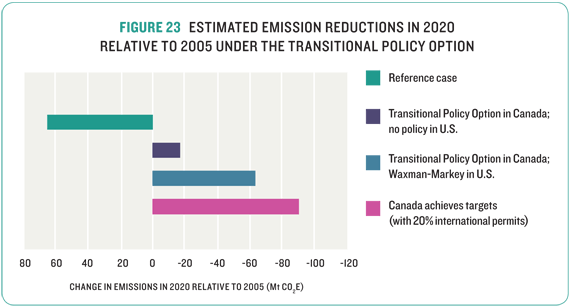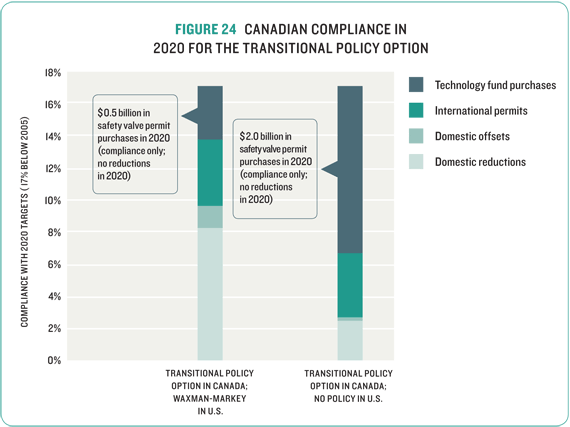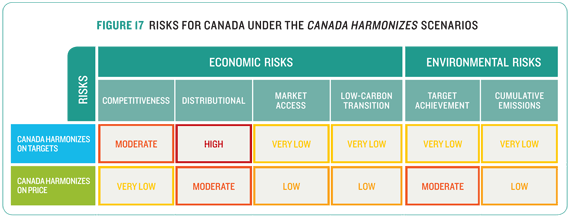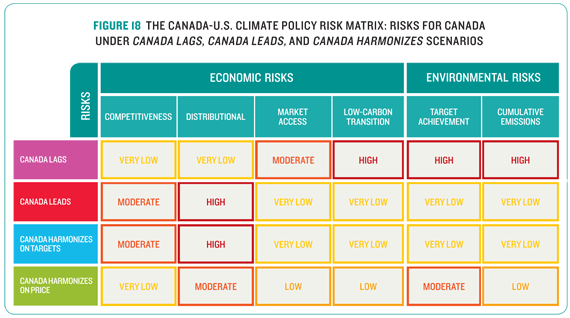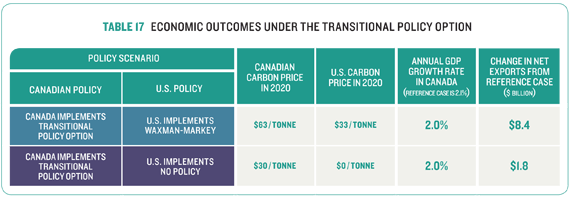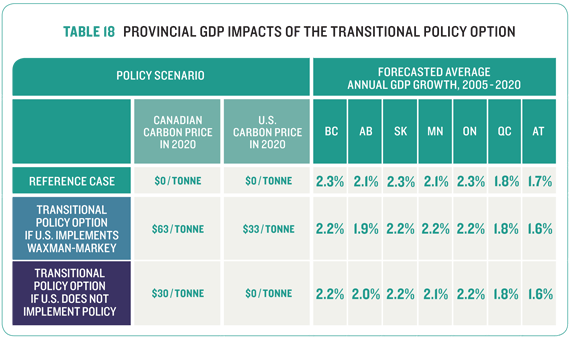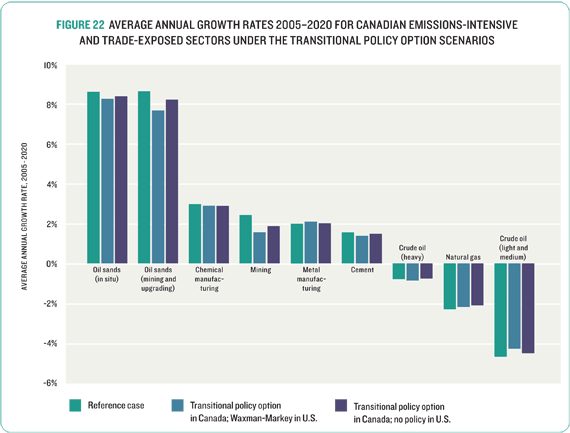Parallel Paths – The NRTEE Transitional Policy Option
This Transitional Policy Option offers an innovative new approach that would allow Canada to drive investment in low-carbon technologies and to achieve real emission reductions. The option fosters policy certainty in Canada even in the wake of uncertainty in U.S. policy direction. It leaves Canada free to adjust and harmonize future climate policy elements with the U.S. as its own policy comes online, setting up Canada for eventual linkage with a U.S. system.
The Transitional Policy Option contains the following four elements:
1 // Contingent carbon pricing — to establish a price collar that limits the Canadian carbon price to be no more than $30 / tonne CO2e higher than the price in the U.S.;
2 // A national cap-and-trade system — with auctioning of permits and revenue recycling to cap emissions and address regional and sectoral concerns.
3 // Limited international permits and domestic offsets — to keep domestic carbon prices lower for Canadian firms, thus maintaining competitiveness, and further harmonizing with U.S. policy direction ; and
4 // Technology fund — to keep domestic carbon prices lower for Canadian firms, align carbon prices close to those in the U.S., and stimulate investment in needed emission reductions technologies.
Environmental Outcomes of the Transitional Policy Option
Under the Transitional Policy Option, Canada’s emissions in 2020 would be lower than 2005 levels whether the U.S. implements policy or not.
Economic Outcomes of the Transitional Policy Option
This policy option successfully accommodates either action or inaction by the United States. Forecasted economic impacts are generally small and manageable. This is for two main reasons: first, the carbon price differential between Canada and the U.S. is limited and second, the absolute magnitude of the Canadian price is contained.
Summary: A Transitional Policy for Canada
This made-in-Canada Transitional Policy Option presents an opportunity for Canada to lead responsibly on climate policy, ensure appropriate harmonization with the United States, build on existing federal and provincial / territorial policy approaches, and manage both environmental and economic risks to Canadians. It achieves the following goals:
1 // To set Canada on a path toward achieving deep, long-term emission reductions at least cost, no matter what policy choices are made in the U.S.; and
2 // To minimize adverse national, regional, and sectoral impacts from U.S. and Canadian climate policy as much as possible. The option would achieve real emission reductions.

























